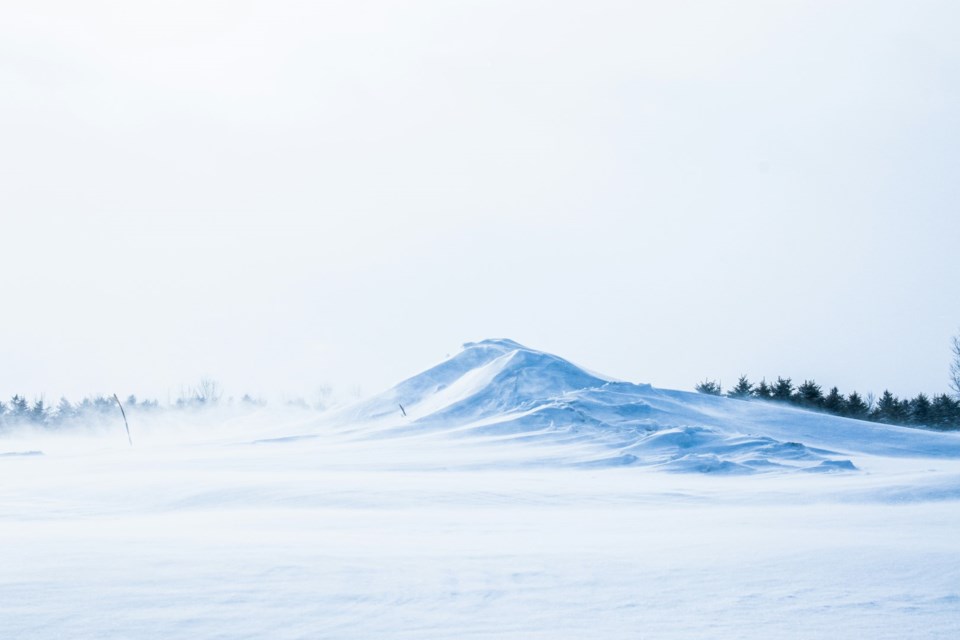WESTERN PRODUCER — Placement is the biggest mistake made when putting up a snow fence. The capacity of the fence and the average amount of blowing snow is important. To estimate the quantity of blowing snow expected in a typical winter, you need to determine the fetch or distance where wind can pick up and then redeposit snow.
For most regions across the Prairies, the prevailing wind direction during blowing snow events is either north or south, so you’ll need to determine how much open space there is in both directions. If you have huge open spaces, you don’t need to worry about distances longer than about four kilometres.
Snow amounts across the Prairies vary greatly from year to year, but during a typical winter, most regions expect around 100 centimetres. On average, about 70 per cent of this snow will be relocated by wind, but this depends how natural trapping capacities like tall grass and ditches affect the snow before it reaches your snow fence.
Take the example of a wide-open cultivated field, with a fetch length of around 500 metres. You could expect around 25 tonnes of snow to be transported per metre over the winter. This increases to around 100 tonnes per metre for fetches over 3,000 metres in length.
What does this mean? It means a snow fence will need to be sized and placed so it can capture this amount of snow. If a snow fence is too small, it will no longer prevent snow from drifting downwind once its capacity is reached. Also, if the fence is too close to the area you are trying to protect, the size of the drift may eventually cover the area, making the situation worse.
Height is the main feature of a snow fence that determines how much snow will be captured. To capture 25 tonnes per metre, you need a fence around four feet tall. To capture 100 tonnes per metre, you’ll need a fence around eight feet tall.
Typically, pre-made snow fences are four to five feet tall, but most people don’t realize that a gap of about six inches should be left between the bottom of the fence and the ground. This gap helps optimize the catching ability of the fence, and on a four-foot fence, the extra six inches can increase the capacity of the fence by 30 per cent.
For most places in our region, a 4.5- to 5.5-foot high snow fence will do the job. If you need a higher fence, you can either increase the height or put up a double snow fence, which is two snow fences parallel to each other and spaced using established guidelines.
A rule of thumb for placement is that a fully grown drift can stretch downwind around 35 times the height of the fence. Therefore, a 4.5-foot fence is capable of producing a drift around 150 feet in length. But remember, this is the maximum length, and in some years we never get enough snow or blowing snow to develop a full-sized drift.
The fence should be placed perpendicular to the prevailing wind direction and should extend up to 10 times the fence height in either direction of the area the fence is trying to protect. This will take into account variation in wind direction. If the area you are trying to protect is 300 feet wide, your fence should extend around 50 feet past this area in each direction, giving you a 400-foot fence.
Daniel Bezte is a teacher by profession with a BA in geography, specializing in climatology, from the University of Winnipeg. He operates a computerized weather station near Birds Hill Park, Man. Contact him at [email protected].
Related
About the Author




